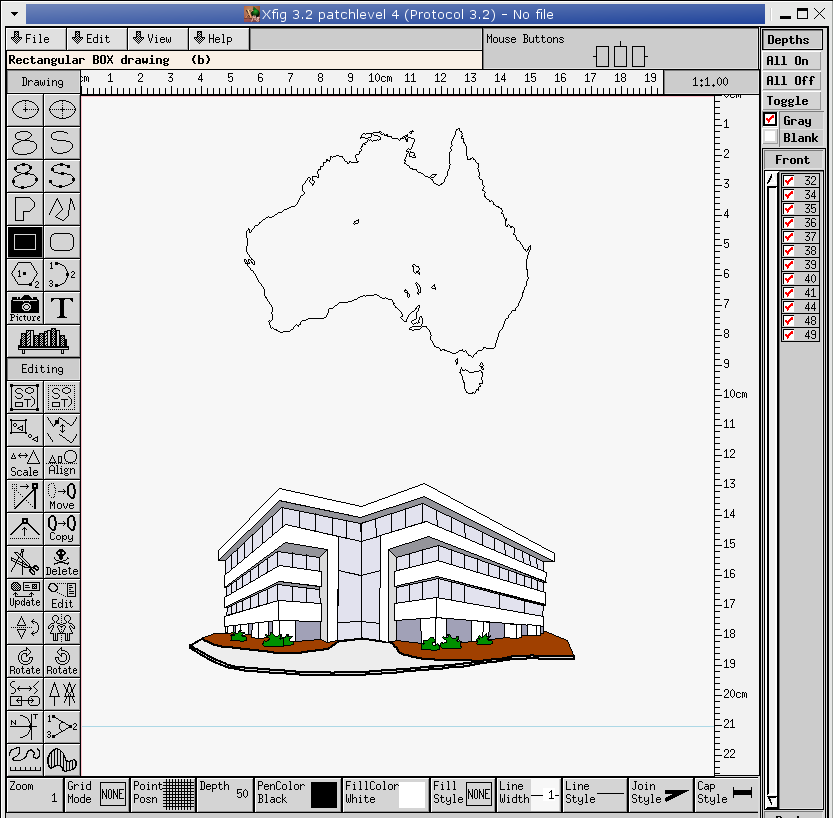37.3 Xfig Vector Graphics Editor
With xfig figures are drawn using objects such as circles, boxes, lines, spline curves, and text. Images can be imported, supporting formats such as gif, jpg, and eps.
Xfig saves its figures in its native Fig format that may be converted into various formats such as eps, gif, and jpg
Other applications can produce output in the Fig format, including gnuplot, gnuplot, gnuplot (Section 53.3) and xgraph, both of which can generate graphs direct from the corresponding data. Alternatively, pstoedit can generate input suitable for editting with Xfig.
 Xfig is an older
Unix-based vector graphics tool. It has been quite popular and
although its interface is showing signs of its age, it remains a
useful and powerful vector graphics editor. {#fig:xfig-sample}
Xfig is an older
Unix-based vector graphics tool. It has been quite popular and
although its interface is showing signs of its age, it remains a
useful and powerful vector graphics editor. {#fig:xfig-sample}
Your donation will support ongoing availability and give you access to the PDF version of this book. Desktop Survival Guides include Data Science, GNU/Linux, and MLHub. Books available on Amazon include Data Mining with Rattle and Essentials of Data Science. Popular open source software includes rattle, wajig, and mlhub. Hosted by Togaware, a pioneer of free and open source software since 1984. Copyright © 1995-2022 Graham.Williams@togaware.com Creative Commons Attribution-ShareAlike 4.0
